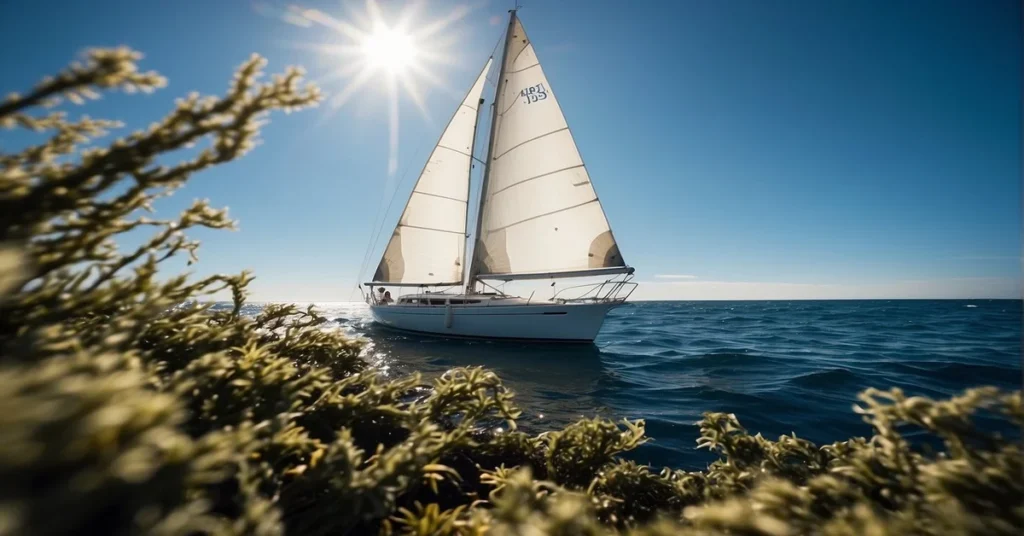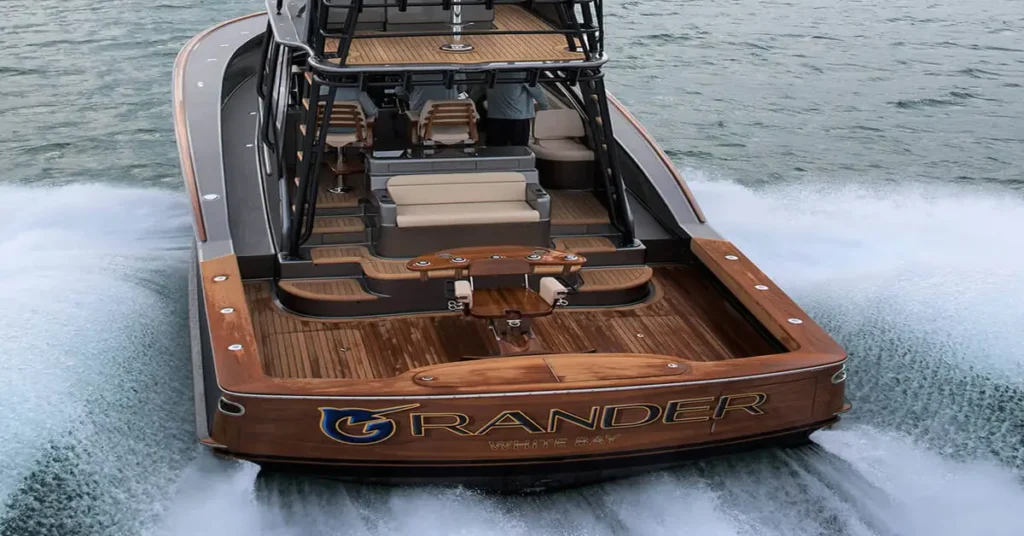Building our homemade pontoon boat can be an exciting challenge and a rewarding DIY project. With creativity and basic construction skills, we open up a world of possibilities on the water. Whether we are after a leisurely cruise around the lake, a peaceful fishing expedition, or a lively party platform, crafting a pontoon boat with our own hands allows us to tailor our watercraft to our specific needs and preferences.
As we construct a pontoon boat from scratch, we must consider the materials, design, and safety features that will make up our floating masterpiece. The beauty of a DIY pontoon boat lies in its simplicity and modularity. With the right plans and some elbow grease, we can transform ordinary materials into a functional and stylish vessel that reflects our taste. By building it ourselves, we know every nut and bolt and can ensure its quality and durability.
Let’s dive into this project with enthusiasm and envision the days ahead spent on our very own handcrafted pontoon boat, skimming across the water with friends and family. The process may require patience and perseverance, but imagine the pride and joy we’ll feel when we set sail on the boat we built with our hands – an actual labor of love and a testament to our DIY spirit.
Design Your Own Homemade Pontoon Boat
Crafting a homemade pontoon boat is a rewarding project that allows us to explore the water in a vessel that reflects our personal touch. Let’s dive into the specifics of creating an efficient design and bringing it to life.
Pontoon Boat Plans and Design Considerations
When sketching out homemade pontoon boat plans, it’s essential to pinpoint the size and weight capacity. We’ll need to balance our boat’s buoyancy with its load, considering whether to create a PVC pontoon boat or a plywood-based design. Watercraft stability is vital, so opting for a double-hull pontoon boat design can enhance the balance.
Choosing Materials and Tools
The anatomy of our pontoon boat will mainly comprise PVC pipes or sturdy steel for frames. For decking, plywood is economical and reliable, which we can protect with fiberglass or paint for durability. Essential tools will include a saw, drill, and galvanized screws to resist rust. Using recycled materials is not only cost-effective but also environmentally friendly.
Creating a Unique Pontoon Boat
The individuality of our boat shines through in the features. We could integrate foldable sections for easy storage or build a picnic-tabled pontoon boat for enjoyable waterborne feasts. Implementing foam for additional buoyancy might mesh well with PVC pontoon boat designs, where lightweight and modularity are priorities.
Safety Measures and Regulations
Safety can’t be overlooked. Ensuring our pontoon has proper life jackets, swift leak management, and reliable engine installations are non-negotiable. Also, adhering to maritime regulations is fundamental, which may impact our design choices and materials used.
Aesthetic Touches and Features
The visual impact of our pontoon boat is just as significant. We’ll want to invest time in painting and adding vinyl decals for a vibrant look. Finishing touches like durable and attractive furniture can transform our handcrafted vessel into a delightful hub for on-the-water relaxation and socializing.
Building the Pontoon Boat

When we undertake the project of a homemade pontoon boat, the thrill of creating something functional and fun from scratch fuels our excitement. A particular pride comes with navigating waterways on a vessel we’ve built with our own hands.
Preparing the Frame and Hull
To start our pontoon boat, the frame acts as the skeleton of our project. Selecting suitable materials is crucial, often a choice between durable steel or lightweight aluminum. We reinforce the structure with wood glue and fasteners appropriate for marine application. For the hull, mini pontoon boat kits offer prefabricated parts that simplify this step. Still, those with more experience might opt for custom fabrication, ensuring our pontoons are sealed tight for buoyancy and stability.
Assembling the Deck and Furniture
The deck is the platform for our creativity. We use marine plywood for its resistance to water damage, securing it to our frame with care. For the furniture, captain’s chair and bench seats can be fashioned from weather-resistant materials to ensure durability. We add flooring and a fence around the deck for safety and aesthetics. Our boat feels like a space for relaxation and adventure at this stage.
Installing the Motor and Steering
Our homemade pontoon boat comes to life when we install the motor. An outboard motor is famous for its ease of use and maintenance. The engine and propeller must be matched to the size and weight of our pontoon for efficient propulsion. The marine engine is installed at the stern with careful attention to the steering mechanism to ensure smooth sailing.
Final Touches
Before the test drive, our pontoon boat needs those finishing touches. This includes installing railings, a canopy for shade, light fixtures for evening cruises, and a fresh coat of marine paint. After calibrating our steering and a thorough safety check, we’re ready to launch and explore the tranquility of open waters. If You need more inspiration for ideas on how your Pontoon Boat could look, check out our article “Creative Pontoon Boat Ideas for 2024: Transform Your Boat into a Fun Paradise!“
Launching and Maintaining Your Pontoon Boat
Crafting a homemade pontoon boat is incredibly fulfilling, and there’s nothing like the first time we see our craft gliding over the water. But after the build, launching it safely and keeping it in top condition is vital.
Testing and Safety Checks
Before setting sail, we always run thorough testing and safety checks. We’d check for any leaks and ensure straps are correctly fastened. It’s essential to confirm that all safety measures and regulations are met, including having enough life jackets on board.
- Test Drive: No homemade pontoon should hit the water without a controlled test to assess its handling and stability.
- Galvanized Screws and Bolts: Inspect the integrity of all fastenings—preferably galvanized screws and bolts that resist corrosion.
Maintenance Tips and Repairs
Keeping our pontoon boat in pristine condition requires regular maintenance and timely repairs. Examining the paint and fiberglass for any damage should be part of our upkeep routine, as should checking and repairing any foam installed for buoyancy.
- Quick Fixes: Have tools on hand for immediate repairs of minor issues, such as tightening loose bolts or patching small leaks.
- Seasonal Overhauls: Commit to a more comprehensive check-up and maintenance routine at least once a season.
Customizing Your Watercraft Over Time
Our homemade pontoon boat is a canvas for limitless customization, evolving with new pontoon boat ideas. From aesthetic changes like fresh paint to installations of mini pontoon boat kits for added functionality, our watercraft has become uniquely ours over time.
- DIY Ideas: Get creative with DIY additions that enhance the boating experience, such as adding a swim platform or upgrading the deck.
- Material Upgrades: Even after initial construction, consider upgrading materials for durability and performance.
Storage and Care
When we’re not cruising the waters, proper storage and care of our pontoon boat ensure its longevity. Use quality covers to protect it from the elements, and fasten it with durable straps to keep it secure.
- Dry Docking: If possible, store the pontoon boat out of water when not in use to prevent hull damage.
- Cleanliness: Regular cleaning goes a long way in preventing mildew and preserving the appearance of our watercraft.
Our Opinion on Homemade Pontoon Boat

When it comes to a homemade pontoon boat, we hold a skeptical stance. The allure of customizing your vessel is undeniable, but the potential for structural inadequacies and safety vulnerabilities is too significant to overlook.
Homemade pontoon boats may not adhere to the stringent standards that manufacturers follow, which can lead to compromised buoyancy and stability. Moreover, the absence of professional quality control can result in maintenance challenges and reduced longevity. We strongly advise considering these factors before embarking on such a project. If you want more sporty pontoons, check out our article about the Top 5 Sport Pontoon Boats 2024.
FAQ – Homemade Pontoon Boat

We’re stoked to dive into the world of building a homemade pontoon boat! It’s a rewarding project that can set you sailing on your next aquatic adventure. Below you find our FAQ section.
How hard is it to make a pontoon boat?
Constructing a pontoon boat from scratch can be a challenging yet fulfilling endeavor. It requires a solid understanding of basic construction principles, access to materials, and a good dose of patience. For those with DIY skills and determination, it’s a task that is entirely achievable, especially with detailed plans and step-by-step guides at your disposal.
What can you make pontoons out of?
Pontoons can be crafted from various materials, each providing different advantages. Here are two standard options:
Plastic Barrels: Affordable and buoyant, used plastic barrels can create stable pontoons and are famous for their recyclability.
Aluminum Tubes: For a more durable and long-lasting approach, aluminum tubes may increase your vessel’s longevity.
What do you need for a pontoon boat?
Constructing a pontoon boat calls for a collection of materials and tools. To kickstart your project, ensure you have the following essentials:
Flotation Devices (like barrels or tubes)
Frame Materials (metal or wood for structure)
Decking Material (typically wood or composite)
Fasteners and Adhesives (screws, bolts, and marine-grade glue)
Additional Accessories (seating, railings, etc.)
Gathering the right tools and materials is the crucial first step in bringing the excitement of a homemade pontoon boat into your life – Share Your Experience in the comments below and tell us what you think about our article and tips.



